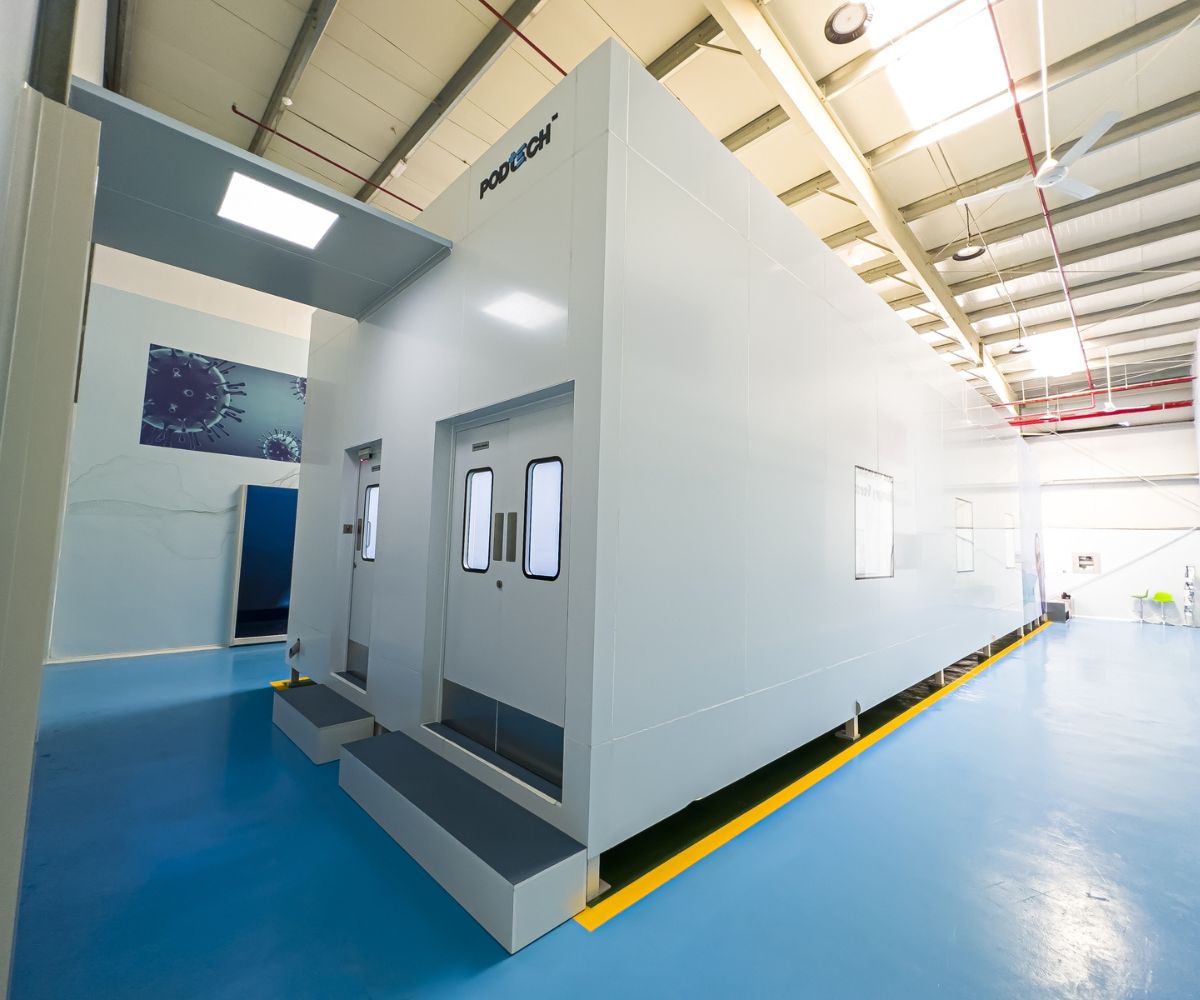
Introduction to Clean Room Manufacturing
Clean rooms play an integral role in industries where maintaining a contamination-free environment is critical. From pharmaceutical production to semiconductor fabrication, these controlled environments are indispensable for ensuring high product quality and regulatory compliance. The importance of clean room manufacturers lies in their ability to design and deliver tailored solutions that meet stringent industry standards.
This guide delves into the world of clean room manufacturers, exploring their expertise, offerings, and the latest advancements shaping the industry.
What is a Clean Room?
A clean room is a controlled environment with a regulated level of contamination, including particles such as dust, airborne microbes, and chemical vapours. These environments are meticulously engineered to:
- Maintain low levels of pollutants.
- Regulate temperature, humidity, and pressure.
- Meet classification standards like ISO 14644-1 or Federal Standard 209E.
Clean room manufacturers specialize in the design, construction, and installation of these environments across a variety of sectors.
Key Industries Served by Clean Room Manufacturers
Pharmaceutical and Biotechnology
Pharmaceutical clean rooms are designed to meet Good Manufacturing Practices (GMP) guidelines, ensuring the safe production of drugs, vaccines, and other biological products. Features include:
- HEPA and ULPA filtration systems.
- Seamless wall and floor finishes to minimize contamination.
- Precise environmental controls for temperature and humidity.
Semiconductor and Electronics
The semiconductor industry demands ultra-clean environments to manufacture microchips and other electronic components. Clean rooms in this sector require:
- ISO Class 1–5 compliance.
- Advanced airflow systems like laminar flow.
- Antistatic finishes to prevent damage to sensitive equipment.
Healthcare and Hospitals
Hospitals rely on clean rooms for critical applications like operating theatres, isolation rooms, and sterile processing units. These facilities must comply with strict health regulations, such as:
- ASHRAE 170 standards for ventilation.
- Antimicrobial surfaces for infection control.
Food and Beverage
Clean room environments ensure the hygienic production of foods and beverages, minimizing the risk of contamination. Key features include:
- Hygienic design with stainless steel surfaces.
- High-efficiency air filtration.
- Positive pressure environments to keep contaminants out.
Types of Clean Rooms Manufactured
Modular Clean Rooms
Modular clean rooms are pre-fabricated units that offer flexibility, scalability, and cost-efficiency. They are ideal for industries requiring quick deployment or temporary solutions.
Hardwall Clean Rooms
Hardwall systems provide a robust and permanent solution for applications requiring strict contamination control. These rooms are often used in semiconductors and pharmaceuticals.
Softwall Clean Rooms
Softwall Modular cleanrooms are constructed with flexible curtain walls, making them a cost-effective option for less demanding applications.
Hybrid Clean Rooms
Combining elements of hardwall and softwall systems, hybrid clean rooms offer a balance between cost-effectiveness and durability.
Key Features Offered by Top Clean Room Manufacturers
Advanced Filtration Systems
Clean room manufacturers provide state-of-the-art filtration systems, such as HEPA (High-Efficiency Particulate Air) and ULPA (Ultra-Low Penetration Air) filters. These filters ensure the removal of up to 99.999% of airborne particles.
Precision Airflow Control
Unidirectional or laminar airflow systems are designed to maintain consistent air circulation and reduce the risk of contamination.
Environmental Monitoring Systems
Real-time monitoring systems track critical parameters like particle count, pressure, temperature, and humidity, ensuring compliance with strict regulatory standards.
Custom Design and Integration
Leading manufacturers work closely with clients to develop customized clean room solutions that align with specific operational needs.
Energy Efficiency
Modern clean room designs focus on energy-efficient systems, including variable-speed fans, LED lighting, and optimized HVAC systems, reducing operational costs.
Top Considerations When Choosing a Clean Room Manufacturer
Compliance and Certifications
Ensure the manufacturer adheres to international standards such as ISO 14644, FDA guidelines, and GMP requirements.
Experience and Expertise
Look for manufacturers with a proven track record in your industry, as they will understand the unique challenges and requirements.
Customization Capabilities
A reliable manufacturer should offer tailored solutions that meet your specific needs, from design to installation.
After-Sales Support
Maintenance and support are critical for ensuring long-term performance. Opt for manufacturers offering comprehensive after-sales services.
Emerging Trends in Clean Room Technology
Smart Clean Rooms
The integration of IoT (Internet of Things) technologies enables real-time monitoring, predictive maintenance, and remote control of clean room environments.
Sustainable Designs
Green clean room solutions focus on reducing energy consumption and environmental impact through advanced HVAC systems and eco-friendly materials.
3D Printing for Clean Room Components
3D printing technology is revolutionizing the production of customized clean room components, reducing lead times and costs.
Automation and Robotics
Robotic systems enhance efficiency and precision in clean room operations, particularly in the semiconductor and biopharmaceutical sectors.
Conclusion
Clean room manufacturers are pivotal in enabling industries to maintain the highest standards of quality and safety. By leveraging advanced technologies, customized solutions, and a deep understanding of industry needs, these manufacturers ensure their clients stay ahead in a competitive market.
For businesses looking to invest in clean room technology, partnering with a reputable manufacturer is essential for achieving operational excellence and regulatory compliance.






Leave a Reply